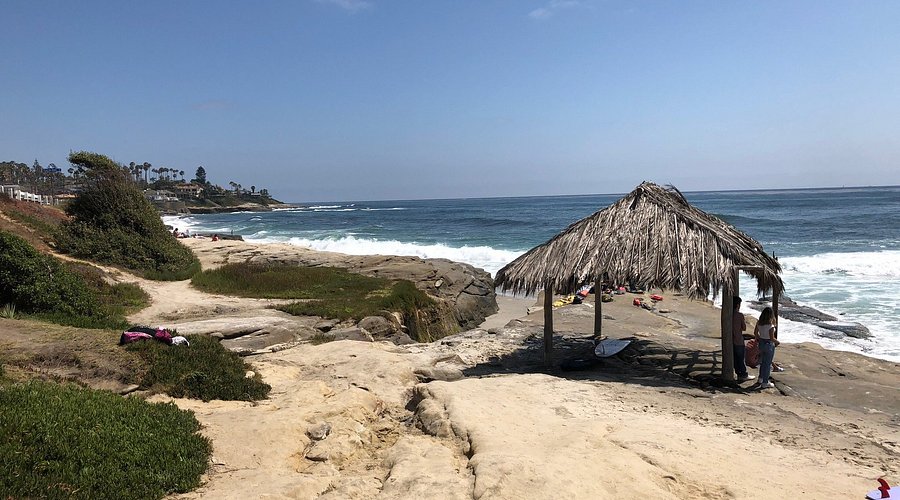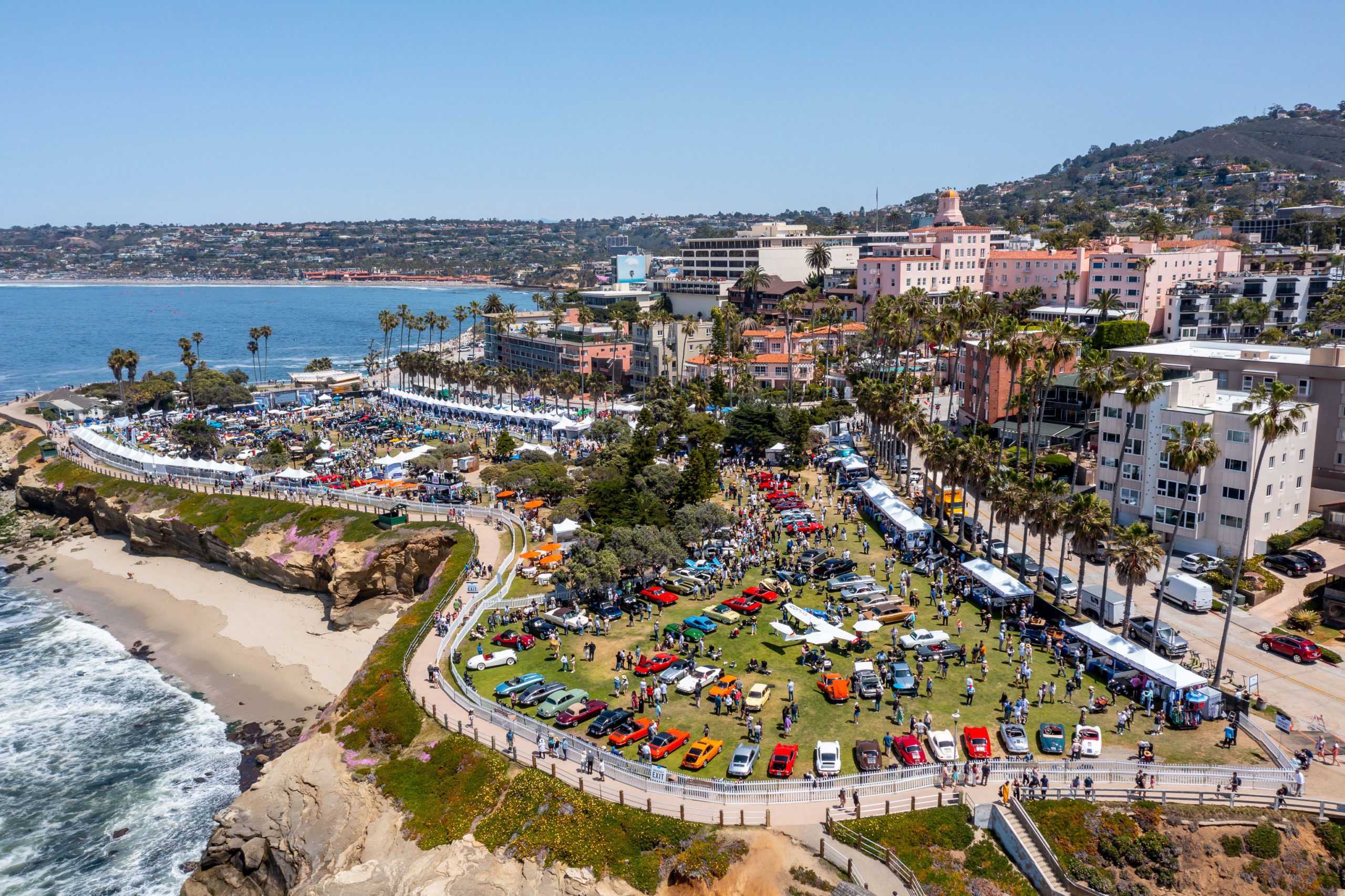La Jolla Insiders Weather Central
“In short there’s simply not, a more congenial spot For happily ever aftering…”
-Camelot
Traditionally, La Jolla, like most any other desirable vacation destination in America, has been a summer vacation lure between Memorial and Labor Days. But, no longer; COVID has mightily changed our leisure patterns (along with most everything else). People telecommuting from home now have almost total control of their work schedules and their calendars, allowing travel when the road beckons, not when the boss says okay. Lockdowns have created the yearning to be free and we can’t think of a better way to spend your days than grabbing towel, blanket and sun screen and heading to the beach…whenever you want. La Jolla Insiders are seeing license plates from all over the country on our streets well outside the usual time, which pretty much proves our point.
Of course, weather conditions are paramount to making any vacation decisions. We’ll make it easy for you: Every day is a great day in La Jolla. We’re taking the guessing out of the game and providing a monthly play by play for you with everything you need to know weatherwise.
In La Jolla, the summers are short, warm, arid, and clear and the winters are long, cool, and partly cloudy. Over the course of the year, the temperature typically varies from 50°F to 77°F and is rarely below 44°F or above 85°F.
The best time of year to visit La Jolla for warm-weather activities is from early June to mid October.
Average Temperature in La Jolla
The warm season lasts for 2.5 months, from July 20 to October 5, with an average daily high temperature above 74°F. The hottest month of the year in La Jolla is August, with an average high of 76°F and low of 67°F.
The cool season lasts for 4.5 months, from November 29 to April 13, with an average daily high temperature below 67°F. The coldest month of the year in La Jolla is December, with an average low of 51°F and high of 66°F.
In La Jolla, the average percentage of the sky covered by clouds experiences significant seasonal variation over the course of the year.
The clearer part of the year in La Jolla begins around May 4 and lasts for 5.9 months, ending around November 2.
The clearest month of the year in La Jolla is September, during which on average the sky is clear, mostly clear, or partly cloudy 89% of the time.
The cloudier part of the year begins around November 2 and lasts for 6.1 months, ending around May 4.
The cloudiest month of the year in La Jolla is February, during which on average the sky is overcast or mostly cloudy 41% of the time.
A wet day is one with at least 0.04 inches of liquid or liquid-equivalent precipitation. The chance of wet days in La Jolla varies throughout the year.
The wetter season lasts 4.6 months, from November 18 to April 6, with a greater than 10% chance of a given day being a wet day. The month with the most wet days in La Jolla is February, with an average of 5.2 days with at least 0.04 inches of precipitation.
The drier season lasts 7.4 months, from April 6 to November 18. The month with the fewest wet days in La Jolla is June, with an average of 0.2 days with at least 0.04 inches of precipitation.
Among wet days, we distinguish between those that experience rain alone, snow alone, or a mixture of the two. The month with the most days of rain alone in La Jolla is February, with an average of 5.2 days. Based on this categorization, the most common form of precipitation throughout the year is rain alone, with a peak probability of 20% on February 21.
To show variation within the months and not just the monthly totals, we show the rainfall accumulated over a sliding 31-day period centered around each day of the year. La Jolla experiences significant seasonal variation in monthly rainfall.
The rainy period of the year lasts for 6.0 months, from October 23 to April 23, with a sliding 31-day rainfall of at least 0.5 inches. The month with the most rain in La Jolla is February, with an average rainfall of 2.4 inches.
The rainless period of the year lasts for 6.0 months, from April 23 to October 23. The month with the least rain in La Jolla is June, with an average rainfall of 0.0 inches.
The length of the day in La Jolla varies significantly over the course of the year. In 2022, the shortest day is December 21, with 9 hours, 59 minutes of daylight; the longest day is June 21, with 14 hours, 19 minutes of daylight.
The earliest sunrise is at 5:40 AM on June 11, and the latest sunrise is 1 hour, 30 minutes later at 7:10 AM on November 5. The earliest sunset is at 4:42 PM on December 3, and the latest sunset is 3 hours, 19 minutes later at 8:01 PM on June 29.
Daylight saving time (DST) is observed in La Jolla during 2022, starting in the spring on March 13, lasting 7.8 months, and ending in the fall on November 6.
We base the humidity comfort level on the dew point, as it determines whether perspiration will evaporate from the skin, thereby cooling the body. Lower dew points feel drier and higher dew points feel more humid. Unlike temperature, which typically varies significantly between night and day, dew point tends to change more slowly, so while the temperature may drop at night, a muggy day is typically followed by a muggy night.
La Jolla experiences significant seasonal variation in the perceived humidity.
The muggier period of the year lasts for 3.3 months, from June 29 to October 6, during which time the comfort level is muggy, oppressive, or miserable at least 8% of the time. The month with the most muggy days in La Jolla is August, with 9.3 days that are muggy or worse.
The least muggy day of the year is February 21, when muggy conditions are essentially unheard of.
This section discusses the wide-area hourly average wind vector (speed and direction) at 10 meters above the ground. The wind experienced at any given location is highly dependent on local topography and other factors, and instantaneous wind speed and direction vary more widely than hourly averages.
The average hourly wind speed in La Jolla experiences mild seasonal variation over the course of the year.
The windier part of the year lasts for 6.7 months, from November 13 to June 3, with average wind speeds of more than 6.9 miles per hour. The windiest month of the year in La Jolla is April, with an average hourly wind speed of 7.9 miles per hour.
The calmer time of year lasts for 5.3 months, from June 3 to November 13. The calmest month of the year in La Jolla is August, with an average hourly wind speed of 5.9 miles per hour.
La Jolla is located near a large body of water (e.g., ocean, sea, or large lake). This section reports on the wide-area average surface temperature of that water.
The average water temperature experiences some seasonal variation over the course of the year.
The time of year with warmer water lasts for 2.9 months, from July 11 to October 7, with an average temperature above 68°F. The month of the year in La Jolla with the warmest water is August, with an average temperature of 70°F.
The time of year with cooler water lasts for 4.4 months, from December 9 to April 21, with an average temperature below 61°F. The month of the year in La Jolla with the coolest water is February, with an average temperature of 59°F.
To characterize how pleasant the weather is in La Jolla throughout the year, we compute two travel scores.
The tourism score favors clear, rainless days with perceived temperatures between 65°F and 80°F. Based on this score, the best time of year to visit La Jolla for general outdoor tourist activities is from early June to mid October, with a peak score in the third week of August.
See you soon!







